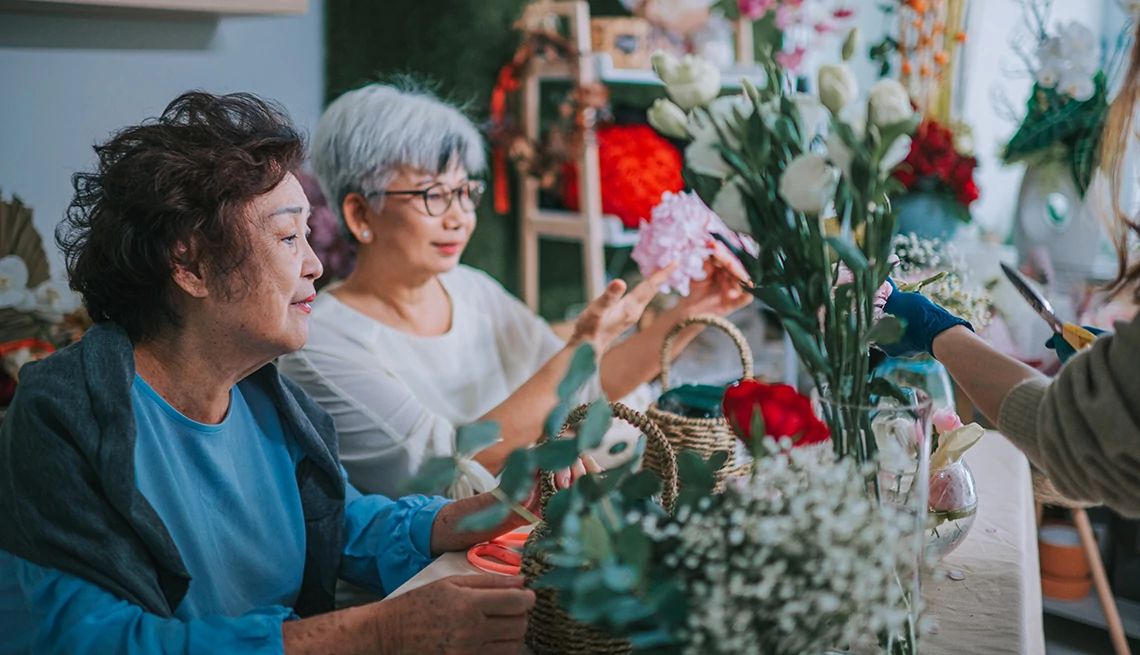Challenges


Looking for a fun, creative way to keep your mind active while feeling more serene and joyful? Try flower arranging.
This hands-on activity is full of benefits, including some that may support brain health as we age. Kaifa Anderson-Hall, a horticultural therapist and president/CEO of Plants and Blooms Reimagined, explains that flower arranging is a horticultural-therapy activity and also a creative, artistic expression. She describes both (via email) as “evidence-based practices [that contribute to] enhanced mental health, which has a direct impact on cognitive functioning.”
Just being near flowers may lift your mood. Indeed, Jeannette Haviland-Jones, professor emeritus of psychology at Rutgers University, has studied the benefits of flowers. One of her studies, published in 2005 in Evolutionary Psychology, involved delivering flowers to a subset of the study’s 104 participants — women and men over the age of 55 — over the course of two weeks. Compared with those who did not receive flowers, those who did reported a more positive mood. They also scored better on memory tests, mostly likely as a result of the mood boost, the authors note.
Suzanne Faith, who is certified in Alzheimer's disease and dementia care, is author of Flowering Your Mind: How To Engage Your Brain In Healthy Exciting New Ways. She sees the power of flowers in action every day and says working with flowers is helpful for people who have cognitive disabilities or just want to stay mentally engaged.
Here are some of the benefits of “flower power” worth checking out:
Trigger memories
One of the most valuable aspects of working with flowers is how just the sight of them can spur memories, Faith says. Many of these recollections are positive, such as spending time in a garden as a child or receiving a bouquet on a special occasion, she says.
Scents can also bring back memories. “[When] working with the smell of flowers, a lot of my clients are able to recall or spark nostalgic memories that they’ve had either [in] childhood or being in one of their favorite places or a memory with a loved one,” says Brittney McKinley, creative director and founder of Contained Stems, where she teaches workshops that combine flower arranging with meditation and other wellness practices.













More From Staying Sharp
Old Friends Make Good Medicine
Reconnect with old friendships and experience the positive emotions that come with it
Get Moving for Memory
Sweat therapy can benefit your health and happiness
One and Done
Focus on a single task for a set period of time